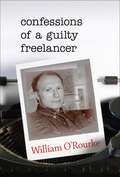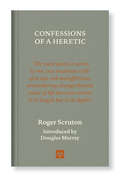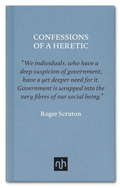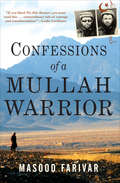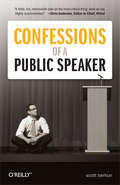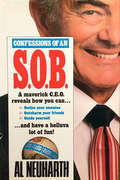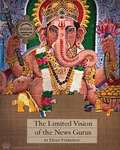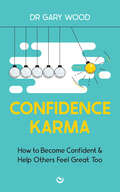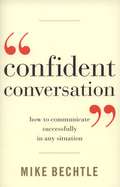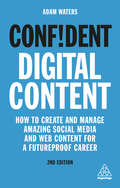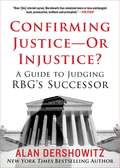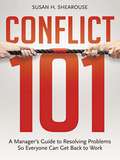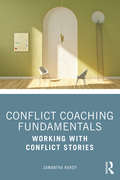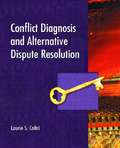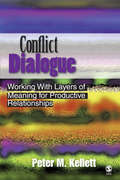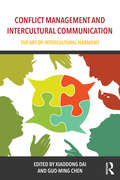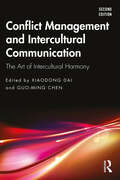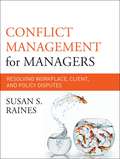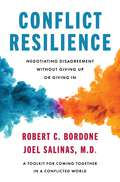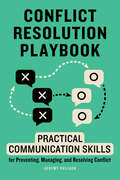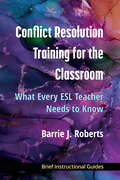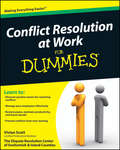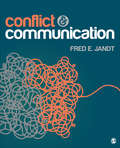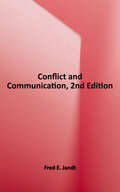- Table View
- List View
Confessions of a Guilty Freelancer
by William O'RourkeFrom an acclaimed writer and journalist, essays containing “a brilliant overview of American history from the 1960s to the post 9/11 era” (Maura Stanton, author of Immortal Sofa: Poems by Maura Stanton).William O’Rourke’s singular view of American life over the past 40 years shines forth in these short essays on subjects personal, political, and literary, which reveal a man of keen intellect and wide-ranging interests. They embrace everything from the state of the nation after 9/11 to the author’s encounter with rap, from the masterminds of political makeovers to the rich variety of contemporary American writing. His reviews illuminate both the books themselves and the times in which we live, and his personal reflections engage even the most fearful events with a special humor and gentle pathos. Readers will find this richly rewarding volume difficult to put down.“O’Rourke has always had his finger on the pulse of the contemporary American literary scene.” —Corinne Demas, author of The Writing Circle“With sparkling wit that never takes a vacation, [O’Rourke] is our unpaid public intellectual number one.” —Jaimy Gordon, author of Lord of Misrule, winner of the 2010 National Book Award for Fiction“O’Rourke’s . . . writing is literary, without a doubt, but his style is conversational, rhythmic and leavened by a dry sense of humor that engage the reader on an intimate level.” —South Bend Tribune“[T]hose who enjoy a good romp through some of our country’s most pivotal times in the company of an astute observer who is unafraid to offer a penetrating, and sometimes scathing, critique of the state of the nation, will find themselves well matched.” —ForeWord Reviews“O’Rourke’s descriptions of the writing life have the ring of absolute truth.” —Review of Contemporary Fiction
Confessions of a Heretic, Revised Edition: Selected Essays
by Roger ScrutonA revised edition of the Notting Hill Editions essay collection by the late Sir Roger Scruton with a new introduction by Douglas Murray.Confessions of a Heretic is a collection of provocative essays by the influential social commentator and polemicist Roger Scruton. Each &“confession&” reveals aspects of the author&’s thinking that his critics would probably have advised him to keep to himself. In this selection, covering subjects from art and architecture to politics and nature conservation, Scruton challenges popular opinion on key aspects of our culture: What can we do to protect Western values against Islamist extremism? How can we nurture real friendship through social media? Why is the nation-state worth preserving? How should we achieve a timely death against the advances of modern medicine? This provocative collection seeks to answer the most pressing problems of our age.In his introduction, the bestselling author and commentator Douglas Murray writes of what it cost Scruton to express views considered unpalatable, and of the importance of these ideas after Scruton&’s death.
Confessions of a Heretic: Selected Essays
by Roger ScrutonHard-hitting essays by acclaimed social commentator and philosopher Roger Scruton, guaranteed to provoke lively debateA wide-ranging selection that includes essays on architecture and modern art, the environment, politics, and culture.Each “confession” reveals aspects of the author’s thinking that his critics would probably have advised him to keep to himself. Roger Scruton challenges popular opinion on key aspects of our society: What can we do to protect Western values against Islamic extremism? How can we nurture real friendship in the digital age of social media and Facebook? How should we achieve a timely death against the advances of modern medicine? How should environmental policies be shaped by the government? This provocative collection seeks to answer the most pressing problems of our age.
Confessions of a Mullah Warrior
by Masood FarivarMasood Farivar was ten years old when his childhood in peaceful and prosperous Afghanistan was shattered by the Soviet invasion of 1979. Although he was born into a long line of religious and political leaders who had shaped his nation’s history for centuries, Farivar fled to Pakistan with his family and came of age in a madrassa for refugees. At eighteen, he defied his parents and returned home to join the jihad, fighting beside not only the Afghan mujahideen but also Arab and Pakistani volunteers. When the Soviets withdrew, Farivar moved to America and attended the prestigious Lawrenceville School and Harvard, and ultimately became a journalist in New York. At a time when the war in Afghanistan is the focus of renewed attention, and its outcome is more crucial than ever to our own security, Farivar draws on his unique experience as a native Afghan, a former mujahideen fighter, and a longtime U.S. resident to provide unprecedented insight into the ongoing collision between Islam and the West. This is a visceral, clear-eyed, and illuminating memoir from an indispensable new voice on the world stage.
Confessions of a Public Speaker
by Scott BerkunIn this hilarious and highly practical book, author and professional speaker Scott Berkun reveals the techniques behind what great communicators do, and shows how anyone can learn to use them well. For managers and teachers -- and anyone else who talks and expects someone to listen -- Confessions of a Public Speaker provides an insider's perspective on how to effectively present ideas to anyone. It's a unique, entertaining, and instructional romp through the embarrassments and triumphs Scott has experienced over 15 years of speaking to crowds of all sizes.With lively lessons and surprising confessions, you'll get new insights into the art of persuasion -- as well as teaching, learning, and performance -- directly from a master of the trade.Highlights include:Berkun's hard-won and simple philosophy, culled from years of lectures, teaching courses, and hours of appearances on NPR, MSNBC, and CNBCPractical advice, including how to work a tough room, the science of not boring people, how to survive the attack of the butterflies, and what to do when things go wrongThe inside scoop on who earns $30,000 for a one-hour lecture and whyThe worst -- and funniest -- disaster stories you've ever heard (plus countermoves you can use)Filled with humorous and illuminating stories of thrilling performances and real-life disasters, Confessions of a Public Speaker is inspirational, devastatingly honest, and a blast to read.
Confessions of an S. O. B.
by Al NeuharthThe millionaire publisher tells how he stopped at nothing to rise from a newspaper delivery boy making twelve cents a week to the nation's most successful media mogul
Confidence Game: The Limited Vision of the News Gurus (Columbia Journalism Review Books)
by Dean StarkmanDean Starkman takes on what has become a dominant perspective on the future of news in the digital age as personified by three well known media thinkers—Jay Rosen, Clay Shirky, and Jeff Jarvis—who have dominated the "future of news" debate. Starkman makes a powerful case that the perspective that these three represent, despite their many useful insights, is in the end corrosive to public-service journalism.
Confidence Karma: How to Become Confident and Help Others Feel Great Too
by Gary WoodLeading UK Psychologist Dr Gary Wood reveals his unique take on how to increase your own confidence by building up the confidence of those around you – as karma tells us, what goes around comes around.Confidence Karma provides the ultimate guide to building lasting confidence at work, in your relationships and, in fact, in every aspect of your life. Using practical exercises, anecdotes and questionnaires, psychologist and life coach Dr Gary Wood provides you with realistic, practical and achievable strategies for change. Learn how to:Influence your body language and project your voice to act confidentlyBuild on your existing strengths and skills, and work with what you already do wellIdentify your goals and values, and learn to live in accordance with themDevelop strength and resilience so you can bounce back from temporary setbacksBecome more comfortable pushing yourself out of your comfort zoneStop selling yourself short and appreciate your value to others Confidence Karma not only provides you with all the tools you need to increase your self-worth, it also encourages you to share the confidence. After all, confidence is a social practice – by working on your own, you can help boost other people&’s, and so each chapter ends with a &“karma call&”, asking you to think about how you can apply your new knowledge and skills in making your colleagues, friends and family their most confident selves as well.
Confident Conversation: How to Communicate Successfully in Any Situation
by Mike BechtleCommunication is an art, and anyone whether shy or outgoing can improve his or her conversational skills. In Confident Conversation, Mike Bechtle offers a straightforward guide to making good conversation that works for any personality type. He highlights the art of give and take, stresses the importance of listening, and gives confidence to those who hesitate to strike up a conversation. He shows readers that they don't have to have a stockpile of great stories to tell in order to make good conversation. Instead, he encourages an "explorer" mindset and gives readers the tools they need to talk to anyone, anytime, anywhere.
Confident Digital Content: How to Create and Manage Amazing Social Media and Web Content for a Futureproof Career (Confident Series)
by Adam WatersAre you considering a career in social media? Are you an entrepreneur or freelancer looking to boost your online content marketing? Maybe you're looking for your next career pivot, or you're simply seeking skills to give your CV that competitive edge? Wherever you are in your career, Confident Digital Content can help. Covering the essentials of online content, this book takes you through everything you need to know - from how to write effectively for online platforms, through to video, audio, graphic design and photography. Featuring inspiring case studies from individuals at companies including CNN International, Mumsnet, Bunster's Hot Sauce and HuffPost UK, this practical beginner's guide includes guidance on content marketing strategy, metrics and community management.This updated second edition features advice on the latest trends, including fake news, the importance of stories and social listening analysis. Though trends, fads and hashtags change, the principles of great online content remain the same - let Confident Digital Content give you the grounding you need to ace your social channels and supercharge your career.About the Confident series...From coding and web design to data, digital content and cyber security, the Confident books are the perfect beginner's resource for enhancing your professional life, whatever your career path.
Confirming Justice—Or Injustice?: A Guide to Judging RBG's Successor
by Alan DershowitzIn Confirming Justice—Or Injustice?, Alan Dershowitz—New York Times bestselling author and one of America&’s most respected legal scholars—contemplates the past, present, and future of the Supreme Court, from the death of Ruth Bader Ginsburg to the confirmation battle looming over President Trump&’s nomination of Judge Amy Coney Barrett. Alan Dershowitz has been called &“one of the most prominent and consistent defenders of civil liberties in America&” by Politico and &“the nation&’s most peripatetic civil liberties lawyer and one of its most distinguished defenders of individual rights&” by Newsweek. He is also a fair-minded and even-handed expert on the Constitution and American government, and in this book offers his knowledge and insight to help readers understand the current circumstances surrounding the Supreme Court and the looming partisan battle for its future. Confirming Justice—Or Injustice? is an analysis of every aspect of the possible confirmation of Judge Amy Coney Barrett to fill the vacant seat left by the death of Ruth Bader Ginsburg. It includes timely commentary on the history and process of confirming justices to the Supreme Court, notes about what might happen if the process is changed—such as by court packing or instituting age or term limits for justices—and discussion of the roles of the various people and groups who might have input on the confirmation, from the president to the senate to the judiciary committee to the Constitution itself. In the end, Confirming Justice—Or Injustice? represents an icon in American law and politics reckoning with an increasingly politicized and polarized nomination-and-confirmation process for judges and what those shifts might mean for the country, both now and in days to come. It is essential reading for anyone interested in or concerned about Trump's nomination of Amy Coney Barrett and the process of her possible confirmation, the legacy of Ruth Bader Ginsburg, and the future and fate of the Supreme Court—and American democracy itself.
Conflict 101: A Manager's Guide to Resolving Problems So Everyone Can Get Back to Work
by Susan H. SHEAROUSELearn how conflict is created, how to respond to it, and how to manage it more effectively so that your team can get back to doing what it does best: producing top results for your organization.From mild disagreements to major personnel blowouts, conflict in the workplace is unavoidable. Conflict 101 employs research, humor, and relatable anecdotes to help readers more deeply understand: what it takes to build trust,harness negative emotions,encourage apologies and forgiveness,use a solution-seeking approach,and say what needs to be said in the workplace to move past conflicts.Whether it&’s a fight over resources, a disagreement about how to get things done, or an argument stemming from perceived differences in identities or values, the manager&’s role is to navigate relationships, build compromises, and encourage better collaboration.In doing so, you&’ll not only become a stronger manager--you&’ll build a much stronger team.
Conflict Coaching Fundamentals: Working With Conflict Stories
by Samantha HardyWe naturally create stories to help us making meaning of our world, but in conflict situations the kinds of stories we typically tell ourselves can actually make it harder for us to manage and resolve the conflict constructively. This book provides an accessible framework for understanding why people tell their conflict stories the way they do, and how to help them move away from conflict stories that prevent them from understanding and responding to conflict in an effective way. Presented using highly engaging and accessible cases, the book is designed to help people working with others in conflict to fully support them by understanding which areas of the conflict story to focus their attention on, and using practical techniques to support people to rewrite their story into a more constructive one to better manage the situation. The book also provides practical strategies to help people who are themselves in a conflict scenario to rewrite and enact a version of their conflict story that helps them to more constructively manage, and often resolve, their situation. A conflict management coaching system is introduced that is designed to address the particular problems created by dysfunctional conflict stories. This is a book specifically for those who work with people in conflict (mediators, conflict coaches, managers, lawyers, HR staff, teachers) and also for anyone who wishes to better understand their own experience of conflict.
Conflict Diagnosis And Alternative Dispute Resolution
by Laurie ColtriFilling a void in the market,Conflict Diagnosis, Brief Editionuses the innovation of the Conflict Diagnosis concept to provide an in-depth appreciation of ADR processes. The survey takes both a true sociological perspective on the interdisciplinary topic of alternative disputes and prefaces these descriptions with an in-depth exploration of the theoretical and empirical basis for understanding their uses, misuses, indications and counterindications to provide readers with a thorough and complete approach to understanding, evaluating and developing strategies and tactics to address interpersonal conflict.The survey addresses basic definitions, dispute resolution processes, preconceptions about conflict and how they short change us, conflict diagnosis, the nine steps of conflict diagnosis, alternative dispute resolution processes, using conflict diagnosis to manage legal disputes and select ADR processes.For human resources personnel, dispute resolution system designers, trainers and ombuds, as well as ADR neutrals and neutrals-in-training.
Conflict Dialogue: Working With Layers of Meaning for Productive Relationships
by Peter M. KellettConflicts are more effectively managed if people understand the layers meaning in their conflicts and collaborate based on those meanings. In this book, author Peter M. Kellett analyzes and interprets real-life conflict stories as a way to create opportunities for more productive ways to navigate and resolve conflict.
Conflict Management and Intercultural Communication: The Art of Intercultural Harmony
by Guo-Ming Chen Xiaodong DaiIn the globally interconnected world, conflicts often arise as a result of tensions between different cultural perceptions and diverse social preferences. Effectively managing conflicts and harmonizing intercultural relationships are essential tasks of intercultural communication research. This book seeks to find effective intercultural conflict management solutions by bringing together a group of leading international scholars from different disciplines to tackle the problem. Consisting of two parts, this book covers major theoretical perspectives of conflict management and harmony development in the first and conflict management and harmony development in different cultural contexts in the second. Integrating the latest work on conflict management and intercultural harmony, Conflict Management and Intercultural Communication takes an interdisciplinary approach, adopts diverse perspectives, and provides for a wide range of discussions. It will serve as a useful resource for teachers, researchers, students and professionals alike.
Conflict Management and Intercultural Communication: The Art of Intercultural Harmony
by Guo-Ming Chen Xiaodong DaiConflict management and harmony building are two key issues of intercultural communication research and merit particular attention in the globally interconnected world. In the expanded second edition, the book explores the effective ways to manage intercultural conflict and develop intercultural harmony, and takes an interdisciplinary approach to address the two issues. The book begins with the theoretical perspectives on conflict management and harmony building. It examines intercultural communication ethics, diversity and inclusion, conflict resolution, conflict face negotiation, and intercultural competence. It presents both Western and non-Western perspectives. The book then addresses in its second section conflict management and harmony building in specific contexts. These include communication in intergenerational relationships, multinational corporations, and virtual spaces, and covers a range of national cultures including the USA, Japan, Germany, and China. Drawing on the current research findings, this book covers the major theoretical perspectives and provides for a wide range of discussions on intercultural conflict management. It is a crucial reference for teachers, students, researchers, and practitioners alike.
Conflict Management for Managers
by Susan S. Raines"Raines masterfully blends the latest empirical research on workplace conflict with practical knowledge, skills, and tools to effectively manage and prevent a wide range of conflict episodes. This is a highly applicable 'top shelf book' that will assist anyone from the aspiring manager to top level management and leadership in the public, private, and nonprofit sectors. It will also be a fast favorite of professors, trainers, and students of business and conflict management."- Brian Polkinghorn, Distinguished Professor, Center for Conflict Resolution, Salisbury University. "With her broad dispute resolution, teaching, and editing experience, Susan Raines is uniquely qualified to organize what is known about conflict management in the workplace. She has succeeded in providing private, public, and nonprofit managers with accessible concepts and tools to deal effectively with the internal and external conflicts they must confront every day. Essential reading for all managers!"- Alan E. Gross, senior director, training coordinator, New York Peace Institute"After reading an advance copy of Raine's impressive book, I can't wait to begin to use it as a seminal text in my classes in organizational conflict. I am amazed at her ability to cover so well such disparate subjects as systems design, public policy disputes, small and large group processes, customer conflicts, conflicts in a unionized environment, and conflicts within regulatory contexts. Her user-friendly writing style is enhanced by her salient examples of exemplary and mistake-laden practices within public and private sector organizations. A 'must-read' for scholars, students, and practitioners interested in organizational conflict."- Neil H. Katz, professor, Conflict Analysis and Resolution, Nova-Southeastern University"Conflict management skills are essential to a manager's success. Raines, a leading scholar and practitioner, provides a comprehensive and strategic new guide to these critical skills and how to use them in any organization."- Lisa Blomgren Bingham, Keller-Runden Professor of Public Service, School of Public and Environmental Affairs, Indiana University
Conflict Resilience: Negotiating Disagreement Without Giving Up or Giving In
by Robert Bordone Joel Salinas M.D.Two former Harvard faculty—one an internationally-recognized negotiator and conflict management expert from Harvard Law, the other a leading behavioral neurologist and cutting-edge scientist from Harvard Med—join forces to introduce conflict resilience: the radical act of sitting in and growing from conflict to break the bad habits that sabotage our politics, workplaces, and most important relationships. Conflict is getting the better of us.From our homes and community centers to C-Suites and Congress, disagreements are happening everywhere, with increasing frequency, and are being treated like zero-sum games that allow little margin for error and even less room for productive conversations. This puts a tremendous and untenable strain on our most important relationships and institutions.Unable or unwilling to negotiate conflict with skill, we ignore it or avoid it for as long as possible; when we are forced to face it, we escalate everyday disagreements and temporary flare-ups as if they’re life-and-death. Neither approach addresses underlying issues, promotes stronger relationships, or yields satisfying results.But there is a solution: a combined skillset and mindset that Bob Bordone calls “conflict resilience”—the ability to sit genuinely with and grow from disagreement. In this powerful, hopeful book, he and renowned neurologist Joel Salinas, MD, combine the inner mechanics of conflict—literally what’s going on in our bodies and our brains during moments of distress—with a groundbreaking three-step framework for how to navigate it:NAME (& dig deep)EXPLORE (& be brave)COMMIT (& own the conflict)In a time of increasing polarization, where consensus, agreement, and problem-solving can sometimes feel elusive, Conflict Resilience provides practical solutions to a common dilemma: How do you handle disagreements and differences with integrity while finding a way to create strong, deep, and lasting relationships?Conflict Resilience is not another book about conflict resolution, nor is it about problem solving. Conflict Resilience combines practical applications of advanced conflict management and study of the human brain to teach anyone how to turn conflict and negotiation into an act of union. This book provides the most cutting-edge and scientifically-grounded tools for driving agreement when possible and for empowering you to disagree better when the differences cut deep and the relationships matter most. This is a chance to bring people together, and an invitation to radically transform how we interact with our friends and families, our co-workers, our students, and our neighbors—anyone with whom we find ourselves in disagreement.
Conflict Resolution Playbook: Practical Communication Skills for Preventing, Managing, and Resolving Conflict
by Jeremy PollackPractical strategies to manage conflict in both personal and professional relationships Conflict is an unavoidable aspect of human existence, so it's vital to develop communication skills that will help you navigate these challenging moments. With The Conflict Resolution Playbook, you'll discover real-life solutions to everyday problems and develop communication skills that can help you make breakthroughs at work, improve your relationships at home, and lead to significant personal growth. You'll start by learning about conflict and the fundamental communication skills necessary for resolution. Then you can put that knowledge to use with clear-cut strategies for preventing conflicts, resolving them once they start, and dealing with common issues, such as gaslighting and bullying. Along the way, you'll gain a better understanding of conflict itself—where it comes from, why it cuts so deep, and how it can be of value. Improve your communication skills with: Back to the basics—Identify humankind's core psychological needs—identity, safety, care, autonomy, growth, and stimulation—and how they relate to conflict. Real-world advice—Learn to recognize different communication styles, collaborate on solutions, practice assertiveness, and more, through relatable scenarios and actionable strategies. The written word—Discover tips for avoiding or resolving common digital communication issues and boost your text-based communication skills. Learn how to improve your communication skills and develop the tools you need to navigate your way through any conflict.
Conflict Resolution Training for the Classroom: What Every ESL Teacher Needs to Know
by Barrie RobertsESL instructors without a background in conflict resolution (CR) who teach intermediate to advanced courses at colleges, universities, or in Intensive English Programs, may want to provide students with valuable negotiation and mediation skills. Author Barrie J. Roberts is an experienced ESL teacher, lawyer, mediator, and Alternative Dispute Resolution (ADR) Administrator for southern California Superior Courts. In this book, she draws upon her experience using these activities in a variety of ESL settings and courses with students from all over the world to inspire other ESL teachers to add CR approaches to their activities, lessons, and courses. Following an introduction to conflict resolution, Conflict Resolution Training for the Classroom shows how much of the teaching of CR is similar to teaching ESL. It outlines ways to apply negotiation and mediation to ESL activities, how to prevent and resolve conflicts, how to use specific types of role-plays to address conflicts, and how to design successful activities. The book also includes a list of resources and sample syllabi.
Conflict Resolution at Work For Dummies
by Vivian ScottA practical workplace guide to handling conflict effectively Managing employees and encouraging them to work together toward a common goal is an essential skill that all leaders should possess. Conflict Resolution at Work For Dummies provides the tools and advice you need to restore peace, train your colleagues to get along better with others, prevent conflicts from ever starting, and maintain better productivity while boosting morale.One of the only trade publications that takes the manager's perspective on how to address conflicts, resolve disputes, and restore peace and productivity to the workplaceExamines more positive means for resolving conflicts (other than arguing, surrendering, running away, filing a lawsuit, etc.)Helps managers and employees sort through problems and make the workplace a more rewarding placeNo manager should be without Conflict Resolution at Work For Dummies!
Conflict and Communication
by Fred E. JandtConflict and Communication introduces students to important theories, key concepts, and essential research in the study of conflict, along with practical skills for managing conflict in their daily lives. Author Fred E. Jandt illustrates how effective communication can be used to manage conflict in relationships and within organizational and group contexts. Along with foundational coverage of conflict styles, mediation, and negotiation skills, the text also features new and emerging models of conflict management, including chapters examining the challenges of conflict between cultures, a chapter on family and organizations, information on both face-to-face and online bullying, a detailed step-by-step guide for mediation, and more emphasis on online dispute resolution.
Conflict and Communication
by Fred E. JandtConflict and Communication introduces students to important theories, key concepts, and essential research in the study of conflict, along with practical skills for managing conflict in their daily lives. Author Fred E. Jandt illustrates how effective communication can be used to manage conflict in relationships and within organizational and group contexts. Along with foundational coverage of conflict styles, mediation, and negotiation skills, the text also features new and emerging models of conflict management, including chapters examining the challenges of conflict between cultures, a chapter on family and organizations, information on both face-to-face and online bullying, a detailed step-by-step guide for mediation, and more emphasis on online dispute resolution.
Conflict and Communication, Second Edition
by Fred E. JandtConflict and Communication acknowledges the inevitable presence of conflict in our lives and the role good communication plays in managing conflict to cultivate a healthier, happier existence. The book explores how we process and act on conflict and how we can leverage a deeper understanding of our own thoughts and behaviors to reduce the amount and severity of conflict in our lives. Opening chapters provide a basis for understanding conflict - from an overview of conflict in our lives to an inventory of our individual power and conflict styles to the oft-overlooked role that culture plays in our understanding of conflict. Later chapters look at the practical application of these ideas in common settings such as negotiation, dealing with aggression, and mediation. A distinctive chapter on apology and forgiveness brings a very human, emotional element to the idea of conflict resolution. A professional mediator, author Fred E. Jandt includes many real-life examples of conflict throughout the text. The second edition features additional examples for deconstructing conflicts, integrated material on online resolution, and expanded coverage on conflicts in organizations and in the family. New Key Takeaways sections in each chapter help students apply newfound understanding and knowledge to real-life situations. Conflict and Communication equip students with research-based techniques, grounded in communication theory, to mitigate the destructive consequences of conflict.
